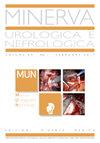A systematic review of nerve-sparing surgery for high-risk prostate cancer.
Q1 Medicine
引用次数: 8
Abstract
BACKGROUND We provide a systematic analysis of NSS to assess and summarize the risks and benefits of NSS in high-risk PCa. METHODS We have undertaken a systematic search of original articles at 3 databases (Medline (PubMed), Scopus, and Web of Science). Original articles in English containing outcomes of nerve-sparing RP for high-risk PCa were included. The primary outcomes were oncological results: the rate of positive surgical margins and biochemical relapse. The secondary outcomes were functional results: EF and urinary continence. RESULTS The rate of positive surgical margins differed considerably, from zero to 47%. The majority of authors found no correlation between NSS and a positive surgical margin rate. The rate of biochemical relapse ranged from 9.3% to 61%. Most of the articles lacked data on OR for positive margin and biochemical relapse. The presented results showed no effect of NS on positive margin (OR=0.81, 0.6-1.09) or biochemical relapse (HR=0.93, 0.52 1.64). A strong association between NSS and potency rate was observed. Without NSS, between 0% and 42% of patients were potent, with unilateral 79-80%, with bilateral - up to 90-100%. Urinary continence was not strongly associated with NSS and was relatively good in both patients with or without NSS. CONCLUSIONS NSS may provide benefits for patients with urinary continence and significantly improves EF in high-risk patients. Moreover, it is not associated with an increased risk of relapse in short- and middle-term follow-up. However, the advantages of using such a surgical technique are unclear.神经保留手术治疗高危前列腺癌的系统综述。
我们对NSS进行了系统的分析,以评估和总结NSS在高危PCa中的风险和益处。方法我们在3个数据库(Medline (PubMed)、Scopus和Web of Science)中进行了系统的原创文章检索。包含保留神经的RP治疗高危PCa结果的英文原创文章被纳入。主要结果是肿瘤结果:手术切缘阳性率和生化复发率。次要结果是功能结果:EF和尿失禁。结果两组手术切缘阳性率差异较大,从0 ~ 47%不等。大多数作者发现NSS与手术切缘阳性率之间没有相关性。生化复发率为9.3% ~ 61%。大多数文章缺乏关于阳性切缘和生化复发的OR数据。结果显示,NS对阳性边缘(OR=0.81, 0.6-1.09)和生化复发(HR=0.93, 0.52 1.64)无影响。NSS与效价之间存在很强的相关性。没有NSS, 0% - 42%的患者是有效的,单侧79% -80%,双侧高达90-100%。尿失禁与NSS没有很强的相关性,在有或没有NSS的患者中都相对较好。结论snss对尿失禁患者有益,可显著改善尿失禁高危患者的EF。此外,在短期和中期随访中,它与复发风险增加无关。然而,使用这种手术技术的优势尚不清楚。
本文章由计算机程序翻译,如有差异,请以英文原文为准。
求助全文
约1分钟内获得全文
求助全文
来源期刊

Minerva Urologica E Nefrologica
UROLOGY & NEPHROLOGY-
CiteScore
5.50
自引率
0.00%
发文量
0
审稿时长
>12 weeks
期刊介绍:
The journal Minerva Urologica e Nefrologica publishes scientific papers on nephrology and urology. Manuscripts may be submitted in the form of Minerva opinion editorials, editorial comments, original articles, video illustrated articles, review articles and letters to the Editor.
 求助内容:
求助内容: 应助结果提醒方式:
应助结果提醒方式:


